Fiber optic connectors are mainly composed of two parts, take our standard SC/UPC connector to give an example. SC indicates the type of connector interface, and UPC suggests the shape of the pin end face.
The connector’s interface is divided into SC, FC, LC, ST, MPO, and many other types. We commonly used in the project are mainly LC, FC, and SC. And the connector pin end shapes are mainly PC, UPC, and APC.
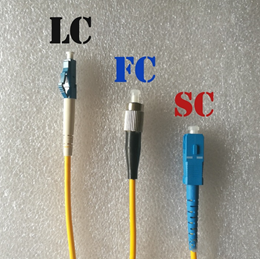
The difference between APC and PC, UPC
PC (Physical Contact)
The polished front face of the pin is spherical in shape. This ensures that the physical end face of the fiber is in full contact when the two connector ends meet to eliminate the effect of Fresnel reflections on the fiber end face of the system, resulting in a return loss value of 40dB or more.
UPC (Ultra Physical Contact)
Compared to the PC end-face, the industry-standard UPC fiber end-face has geometric requirements to achieve a return loss of 50dB or more. UPC is based on the PC end-face polishing and surface finish optimization, the end-face looks more domed.
APC (Angled Physical Contact)
The end face of the fiber is usually ground to an 8° bevel, and the reflected light is reflected back to the cladding through the angle of the bevel rather than directly back to the light source. This minimizes backward reflections, resulting in a return loss of 60dB or more.
The end faces of the three different connectors are shown below. The UPC connector has been completely replaced by the PC connector because the UPC connector has a higher loss than the PC connector. The PC connectors are called UPC connectors in daily life.
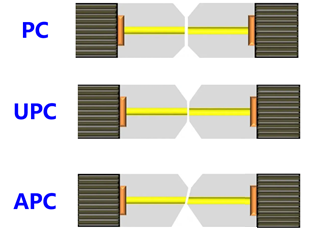
Therefore, there are two types of fiber connector end faces in use: APC and UPC. The difference between the APC and UPC is that the end of the optical fiber has an 8° bevel, and the return loss is larger. In appearance, the main colors of the two connectors are clearly different. The UPC is blue and the APC is green.
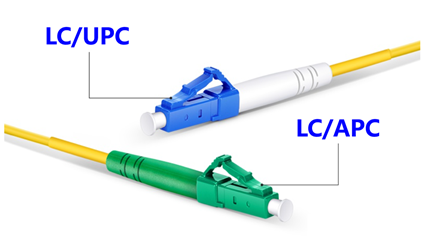
Return loss of movable connectors
- Definition of Return Loss (RL)
The difference between the transmission characteristics of APC and UPC connectors is that the return loss is different. Return Loss (RL) is the decibel of the backward reflected optical power relative to the incident optical power of the optical signal at the active connector.
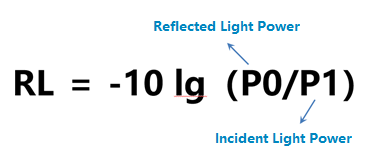
This formula can also be written as RL = 10lg(P1/P0). The larger the value of RL, the smaller the reflected light power into the fiber. Obviously, the larger the RL of the movable connector, the better.
- The impact of return loss on optical communication
In analog optical communication systems, the intensity of the optical signal varies continuously. If the intensity of the reflected signal in the optical fiber is larger, it will inevitably affect the normal signal. Therefore, the larger the RL value of the connector in the analog optical communication system, the better.
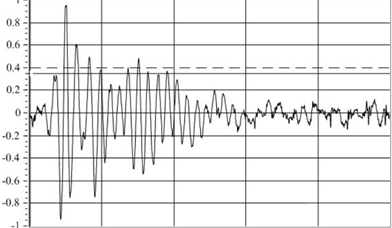
In digital optical communication systems using NRZ codes, there are only two types of optical signal strengths (representing “1” and “0” respectively). The reflected signal in the optical fiber does not affect the transmission of the optical signal as long as it is not strong enough to affect the determination of the signal “1”. Therefore, in digital optical communication systems using NRZ codes, there is no special requirement for the RL value of the active connector.
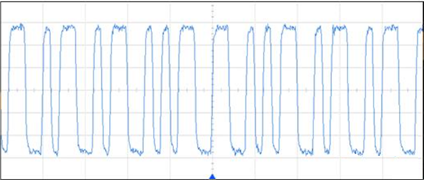
At present, in the MAN single optical module 50G, 200G, and 400G optical communication system, line code type mainly uses PAM4 code. The PAM4 code has four signal intensities, representing 11, 10, 01, and 00. If the intensity of the reflected signal in the optical fiber is large, the judgment of the 01 signal may be affected. Therefore, the line code using the PAM4 code communication system has certain requirements for connector RL.
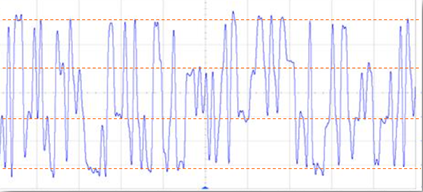
In an actual optical transmission system, there are usually multiple active connections in the fiber optic transmission link, and the optical power of the reflected signal generated by each active connection accumulates in the fiber optic link. Therefore, the higher the number of active connections in a fiber optic link, the higher the return loss requirement for each connector. For example, using the PAM4 code for 40km fiber link, when the number of active connectors in the link is 2/4/6/8, the return loss of active connectors should be not less than 27dB/32dB/35dB/37dB respectively.
- The effect of pin end-face contamination on return loss
When the connector end face is contaminated, it will lead to an increase in return loss. By testing the insertion loss and return loss of UPC movable connectors in the existing network, it was found that the return loss of connectors is more sensitive to end-face contamination. About 20% of the active connectors in the existing network have lower than standard return loss due to end-face contamination, while the insertion loss is only affected when the connector end face is more heavily contaminated.
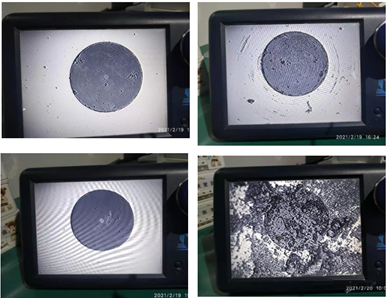
The plug and return losses of the UPC movable connectors whose end faces are partially contaminated are shown in the following table.
| No. | Insertion loss(dB) | Return loss(dB) |
| 1 | 0.06 | 48.5 |
| 2 | 0.08 | 47.2 |
| 3 | 0.34 | 35.9 |
| 4 | 0.32 | 20.1 |
| 5 | 0.06 | 45.4 |
| 6 | 0.12 | 43.3 |
| 7 | 0.69 | 40.3 |
| 8 | 0.01 | 45.6 |
Application scenario of the APC connector
The APC connector is suitable for optical communication systems with high loss requirements due to its larger loss. Such as:
(1) CATV and other analog optical communication systems;
(2) Metro optical communication systems with line code type PAM4 of 50G, 200G, 400G, and above;
The previous analysis shows that PAM4 signals do not require a high level of connector loss (no less than 37dB for 8 active connections on a 40km link). However, the APC connector is recommended because the end face of connectors in actual optical links is polluted. For example, a 50G SPN system operated by an operator using an access layer cable network (8 active connections throughout the link). Because PAM4 line codes and UPC connectors are used, some systems experience errors such as increased error count, Local Fault reporting, and intermittent disconnection of 50G ports. The fault is rectified after the connector is replaced with an APC.
(3) WDM systems using Raman fiber amplifiers.
The fiber end face of the APC connector is 8° beveled, and its cross-sectional area is larger than that of the UPC connector. The larger fiber cross-sectional area and larger return loss make the APC connector more suitable for carrying higher optical power. At present, single-carrier super 100G WDM systems commonly use Raman fiber amplifiers; Raman fiber amplifiers reverse output optical power up to 30dBm. If the UPC connector is used, it is easy to burn the fiber end of the connector. Therefore, equipment manuals that use Raman fiber amplifiers usually explicitly require the use of APC connectors.
APC and UPC connectors of the same interface are essentially the same size. Although they are physically connectable, the insertion loss after the connection is large (over 4.0dB) due to the difference in pin end faces. Therefore, APC and UPC connectors cannot be mixed.
Currently, UPC active connections are commonly used in operators’ optical wiring equipment. With the line code type PAM4 communication system and the use of Raman fiber amplifier WDM system increased, the shortage of UPC active connection is increasingly exposed, fiber active connector should be transitioned from UPC to APC as soon as possible.
